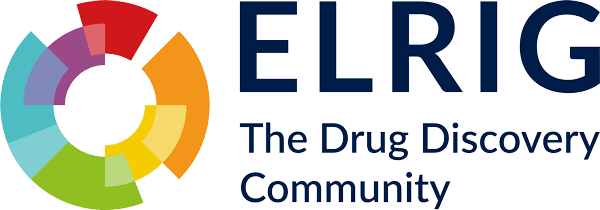Translating Discovery into Impact: Meet RoukenBio’s New Scientific Director of Innovation

Employee News
|
July 29, 2025
|
7 min read
We’re excited to welcome Dr Emilio Cosimo, the newly appointed Scientific Director of Innovation at RoukenBio. With more than 18 years of expertise in oncology, immuno-oncology, and advanced cell therapies, Emilio brings a deep commitment to translational research and drug discovery.
Emilio has a PhD in Medicine from Glasgow University, during which he specialised in oncology, cancer therapeutics and cancer immunotherapies. After carrying out his PhD, Emilio Stayed at Glasgow University as a Postdoctoral Research Associate, where he conducted research on Chronic Lymphocytic Leukaemia which led to the discovery of therapeutic CDK inhibitors and innovative dual mTOR inhibition strategies, showcasing expertise in drug discovery and oncology.
Prior to joining RoukenBio, Emilio has worked as a senior scientist and study director at multiple companies, specialising in CAR-T therapies and GLP-aligned studies, before then delving into the world of life sciences consultancy. Through his life science consultancy business, he conducted comprehensive assessments of biotech projects, performed gap analyses and provided customised solution recommendations, as well as streamlining workflows and bridging gaps between preclinical and clinical stages whilst helping achieve strategic objectives.
Additionally, Emilio has had a plethora of leadership and mentoring experience throughout his career, from mentoring undergraduate and PhD students during his time as a Postdoctoral Research associate, to providing mentorship to junior team members throughout his time as a senior scientist, to directing cross-functional teams to advance therapies from preclinical to clinical stages.
His career has been defined by a passion for connecting scientific innovation with strategic vision - turning cutting-edge research into real-world therapies that make a difference in patient outcomes. In this interview, we discuss his career journey, motivations and the future goals he has for RoukenBio.
What inspired you to pursue a career in targeted radiotherapy and gene therapy?
During my time in Italy, I worked in a lab focused on developing alternatives to viral gene delivery, specifically utilising a non-viral liposome-based system. Also, this technology was being developed to be used with therapeutics (including radiopharmaceuticals) that would be otherwise toxic if administered directly into the body. The encapsulation system offered versatility for a range of applications.
At that time, the lab was collaborating with the University of Glasgow and proposed using this platform for gene delivery instead of drug administration. The target gene was the noradrenaline transporter, which is responsible for the uptake of the radiopharmaceutical MIBG, commonly used in imaging and therapy for neuroblastoma patients. The approach involved modifying neuroblastoma cells to express increased levels of the transporter, aiming to enhance their sensitivity to therapeutic doses of radio-labelled MIBG.
"When I did my PhD in Medicine roughly 20 years ago, this novel form of combination therapy sought to explore synergistic effects between gene delivery and radiopharmaceuticals, a concept that interested me, especially from a physics perspective due to my interest in ionising radiation."
What are some of the most significant challenges you have faced in your career and how did you overcome them?
So, I guess we can start from the PhD, in the old days! The challenge there was getting used to a brand new lab with totally different ways of doing things, especially since I didn’t have much experience yet. This change involved adjustments in our activities, working pace, and the range of topics I needed to learn to become proficient, which presented significant challenges. But the fact that we were in a structured PhD framework at the Beatson Institute and the University provided me training and knowledge that I could apply in my Postdoc. As a result, I quickly adapted, and as I became more independent, I enjoyed my postdoc experience more.
The main challenge at that stage of my career was figuring out whether to pursue the principal investigator path, leading projects and building a team, which I wasn't initially certain about. Eventually, I figured out what I wanted to do.
"The primary motivation I identified was to advance healthcare and enhance patient access to improved treatments, particularly in oncology, which has been a consistent theme throughout my career. Realising that helped me focus and figure out what really matters to me."
What were your motivations for that area? Any personal motivations?
It was a book that inspired me. I have not had direct experience with cancer; however, I read a book by Simon Sinek, an author and motivational speaker, titled ‘Start with WHY’. In the book, he discusses the importance of identifying purpose. This prompted me to question the reasons behind my research work, such as studying small molecule inhibitors and signalling pathways. My initial answer was to gain knowledge, but I continued to question my motivations.
"Ultimately, I concluded that my goal was to contribute to better treatment options, and moving to industry enabled me to pursue this more effectively."
As a cell therapy expert, what's some advice you could give someone starting out in their scientific career today?
I think it is important to identify your why, although there is no need for this to happen immediately, as exploring different options can be beneficial. Understanding your core reason will help clarify the necessary steps and stages required, which in turn can guide your progression.
It is important to remain flexible regarding career paths, as there are multiple ways to be involved in science and the biotech sector. There is not just one pathway. Opportunities exist in marketing, commercial roles, strategy, patents, technology scouting, knowledge transfer, and more. The scientific wet lab is only one aspect, so consider various options, identify your why and be flexible in your career choices.
So as our new scientific director of innovation, what are your main goals to achieve with the in-house Innovation team?
There are many goals, with the primary one being to act as a link between the innovation team, R&D, and commercial and marketing functions. The aim is to optimise innovation outputs, ensure accessibility, and determine effective marketing strategies. It is also important to maintain focus on priority needs. My responsibilities include overseeing strategy, technology scouting, and monitoring trends to guide innovation efforts efficiently. While scientific research often explores various possibilities, my role is to keep the team aligned with current trends and technologies and to help bringing the two parts (technical and commercial) of the company.
Let me ask, when you started off as a young scientist doing your PhD, did you envisage yourself being where you are today?
No, I did not. Previously, my focus was on becoming a principal investigator and following that path to eventually become the team leader. While I am now in a leadership role within a team, this position differs from the strictly academic route I once aspired to. My current responsibilities are broader and more strategic in nature, representing a shift from my original expectations.
In Summary
As our conversation with Emilio comes to a close, it’s clear that his vision and experience will play a pivotal role in shaping the future of innovation at RoukenBio. His dedication to translating scientific breakthroughs into meaningful therapies is not only inspiring but also a powerful reminder of the impact that thoughtful leadership can have. We look forward to seeing how his journey continues to unfold.
Meet Emilio at ELRIG
He will present on October 22nd covering the use of IndEx-2, our inducible cell line platform, to evaluate the impact of target antigen density on immunotherapeutics.
Find a suitable time to talk

